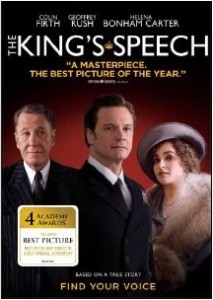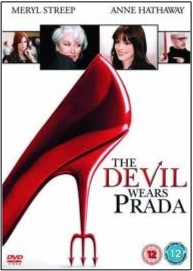DESIGNING GREAT-FILM STORY PROBLEMS!
 WANNA KNOW a crucial key to designing great stories? Here it is:
WANNA KNOW a crucial key to designing great stories? Here it is:
In your current story, what is the “OVERALL-STORY PROBLEM”?
And is it complex enough — masked, multi-sided, arguable, twisty enough — that it will fully occupy the audience’s (and the characters’) attentions and energy for the story’s entire running length??
Is it an inequity that may at first appear to be easily solvable in one “act,” but actually is only sending up misleading “simple” symptoms from deep within its complex, lurking core — just awaiting naive “problem-solvers” who will quickly find themselves out of one or more of their “depths” (physical, mental, spiritual, or emotional) and in much rougher “water” than they have ever been in before???
Careful problem-building is essential
Indeed, careful problem-building is one of the most important things you can do when crafting the “big picture” of your story.
Why?
Because solving that character- (and audience-) puzzling problem is the main thing that will motivate us/your characters; press them to work together (and press us to root for them working together); reveal their deepest weaknesses; and stretch them to their tightest in hopes of solving a problem they had never fully contemplated before.
Even if it’s just a sitcom problem like dating again after a long hiatus, to the character/s facing that “first-in-a-long-time date” it had better turn out to be a problem that emotionally and philosophically pushes the character/s to “the wall” and wrenches out (in a funny way) their very best efforts!
To develop this further:
A GREAT-FILM Overall-Story problem will never be purely logistical (i.e., merely about moving around the external aspects of the story world)!
Never just logistics — though these are important!
 For instance, Star Wars is far more than just the physical battles regarding and surrounding the Death Star; Ratatouille is far more than someone just learning how to handle a saucepan and vegetables; Win Win is far more than just a wrestling coach finding a star player for his losing team; The King’s Speech is far more than just a stammerer learning how to complete a public speech; etc.
For instance, Star Wars is far more than just the physical battles regarding and surrounding the Death Star; Ratatouille is far more than someone just learning how to handle a saucepan and vegetables; Win Win is far more than just a wrestling coach finding a star player for his losing team; The King’s Speech is far more than just a stammerer learning how to complete a public speech; etc.
Right?!?!
Oh yes, all the above are potentially challenging “logistical” problems. But as described, are any of them yet GREAT-STORY problems? By no means!
It is CONTEXTS and CHARACTER TRAITS and related COMPLICATIONS that turned these “merely logistical” problems into writing-award winners and/or huge movie blockbusters!
So if you’re in the business of building better stories, here’s a small exercise to help:
Today’s exercise…
- Take the four “logistical” story descriptions above, and put some space after each one of them.
- As best you can for each film, recall and write into that space all the contextual and character-based variables that heightened and transformed the film’s logistical problem into a compelling feature-film story.
- Think about how your own in-progress story has its own Overall-Story “logistical” problem (it certainly better have one!), and how that logistical problem could be heightened and made more dramatic by some of the same context- and character-based variables used in my four example stories.
I’ll use another film to show you an example of what I’m urging:
An example to follow…
In this one, we might sum up the Overall-Story logistical problem as “keeping your fashion magazine on top in an editor-eat-editor trendsetting competition.” Which in itself already seems like a big, intriguing, multi-faceted logistical problem!
But add to that a young, highly principled writer (Andrea/Andy), who cares nothing for fashion and just wants to get a recommendation from the hyper-driven, seemingly-ruthless boss of that magazine (Amanda) — who was once principled herself, but has now “sold out” quite a bit, and is surrounded by sycophants who daren’t question her.
Also include that the young journalist’s principled boyfriend accuses her of “selling out” too, that she is caught between loyalties to her superior (Emily) and her mentor (Nigel), and that the magazine itself is undergoing a major internal war over whether Amanda should continue ruling it or not.
 With all that, it’s little wonder The Devil Wears Prada is an enduring story! It’s got an epic logistical problem at its core, but also a bunch of carefully designed, multi-layered CHARACTERS whose fragile identities rely deeply on their status in the fashion world, and whose worldviews are being significantly shaken by the ruthless unpredictability of the competition.
With all that, it’s little wonder The Devil Wears Prada is an enduring story! It’s got an epic logistical problem at its core, but also a bunch of carefully designed, multi-layered CHARACTERS whose fragile identities rely deeply on their status in the fashion world, and whose worldviews are being significantly shaken by the ruthless unpredictability of the competition.
Further, it’s in a CONTEXT full of high-stimulation beauty, movement, sensation, color, and intense personalities, so quick power shifts and tricky manipulations elevate the potential stakes of every single decision.
Oh yeah, by the end the film does outline how the logistical magazine-competition problem gets worked out (for the present).
But it also spends plenty of time and energy on how much the resolution of that problem is impacted by internal, non-logistical, character-and-context anchors — like loyalties, ambitions, greeds, senses of obligation, duty, responsibility, etc.
In the cauldron where “inner” and “outer” problems clash
So when it comes to designing GREAT-STORY problems, a central logistical problem is quite important… but it’s really all that “inner stuff” that transforms those logistics from a passing puzzle into a universal, compelling, deep-hearted STORY that sticks around for the long haul — and that’s one of the many things Keys2ScriptSuccess can help you with designing!

